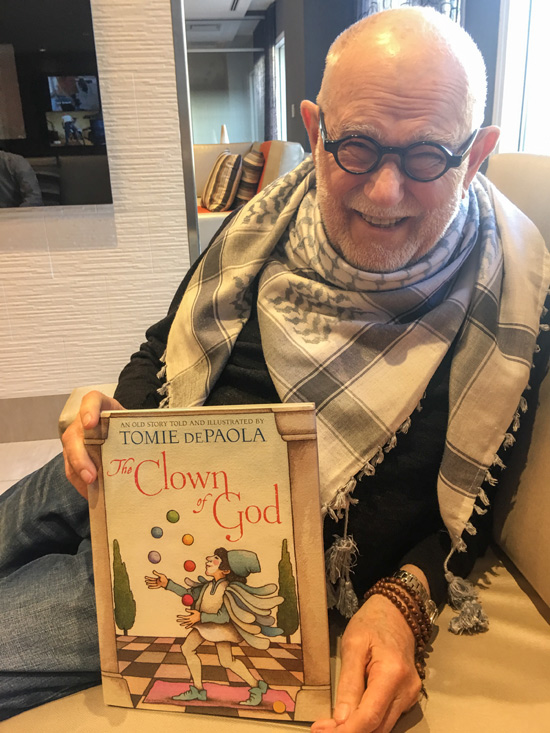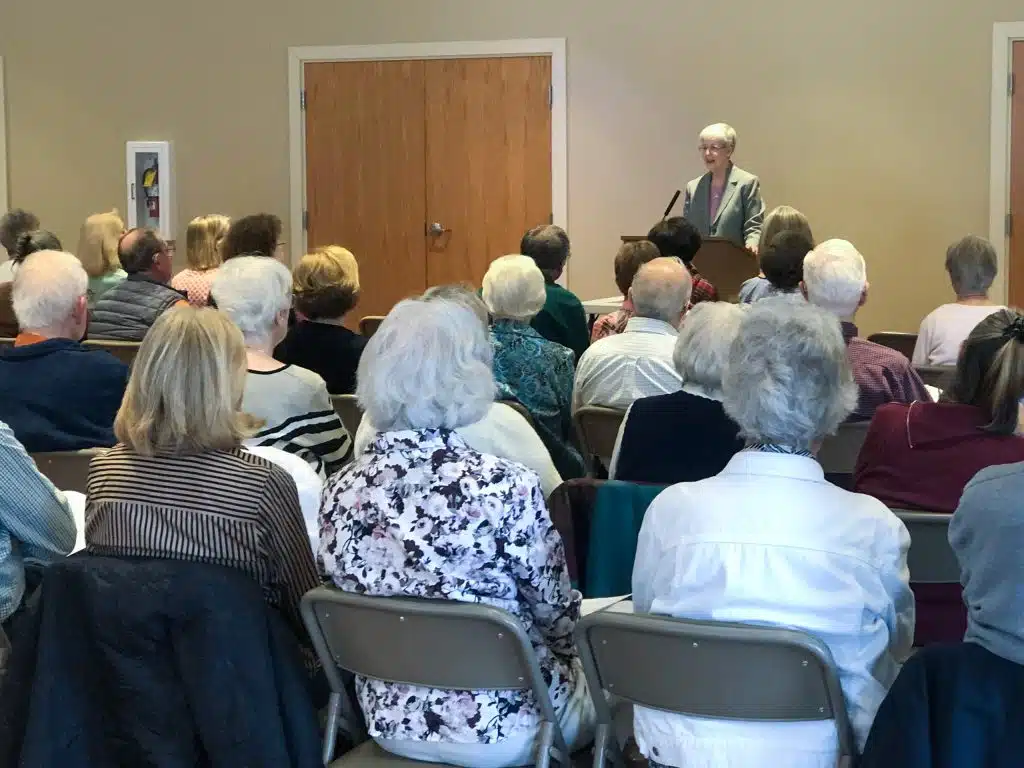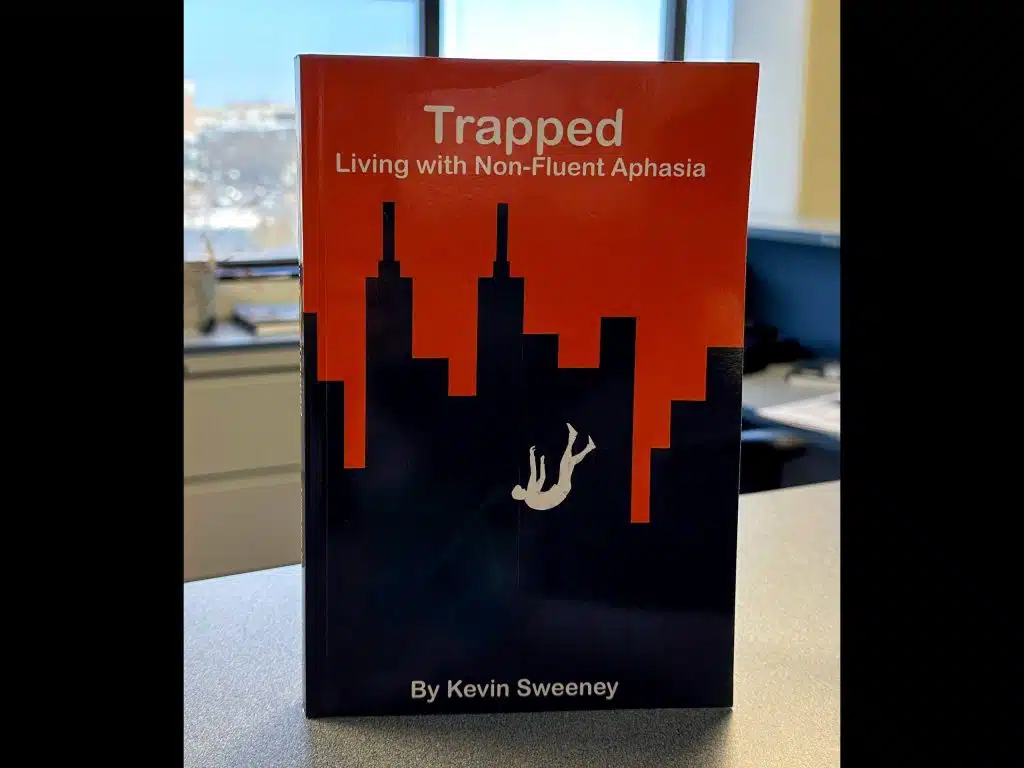For anyone wishing to celebrate the Advent and Christmas seasons with both delight and some sense of a deeper meaning of the holidays, Dumbarton Oaks in Washington offers the perfect occasion: a special exhibition called “Juggling the Middle Ages.”
The display centers on an old legend that was rediscovered in 1873 and has been reimagined over and over, notably in The Clown of God by the beloved children’s author Tomie dePaola, who came to Washington in early November to give a dramatic reading at the museum.
The story tells of an illiterate dancer who forsook the world to join a religious order. According to the short “Exemplum” in Latin: “When he saw his peers singing psalms, since he did not know his letters, thought how he could praise God with the others. For that reason, when the others sang their psalms, he began to dance and leap for joy, and when asked why he did such things, replied, ‘I see everyone serving God in accord with his faculty, and for this reason I wish to celebrate God in accord with mine, as I know how.’”
A rare page is on loan to the show from a pre-1268 manuscript from the French National library in Paris. The Virgin Mary sits on her throne and holds Baby Jesus, while a “jongleur” — the term included singing, dancing, playing a violin-like instrument, and acrobatic feats — performs before her. From the starry sky a heavenly figure descends with a cloth to wipe the juggler’s brow.
The Clown of God
Tomie dePaola saw the page in Paris decades ago, and it reminded him of how much he loved the story while listening to the radio with his mother growing up in an Irish-Italian family in Connecticut. But when he sent sample pages for a book to his publisher, he learned it was “too late,” since the famous writer Barbara Cooney had gotten there first with The Little Juggler in 1961.
In 1978, dePaola said, Norine Odland, who taught children’s literature in Minneapolis, encouraged him to take up the project again. He “dug deep” into his Italian-American heritage and changed the setting from Paris to Sorrento, Italy.
In a recent interview, dePaola leafed through the book’s bright new 2018 edition and pointed to the way he had copied the gondoliers from a painting by Carpaccio (1500) into his scene from Venice, while the central Italian master Piero Della Francesco (c. 1450) inspired the ladies in another episode. Round arches, echoing Renaissance architecture, frame many of the pages, while in the background the skylines of Florence and Venice hover. “And there’s a Tiepolo sky!” he smiled, noting how the great 18th-century muralist had inspired his scene of the clown returning to Sorrento on a wintry night.
DePaola’s adaptation of old visual traditions is a hallmark of his work, enriching its visual appeal while always keeping his own distinctive style and his mantra: “Design comes first.” Particularly devoted to the Virgin of Guadalupe, he designed The Lady of Guadalupe book with attention to the Aztec artistic heritage and costume of the protagonist Juan Diego. His Patrick, Patron Saint of Ireland integrates wave patterns from early Irish art in the narrative of Patrick crossing the sea.
As for the new title for the juggler’s story, it echoes The Reed of God (1944) by Caryll Houselander, a British Catholic artist who depicted the intimately human side of Mary, Mother of God, as an empty reed waiting for God’s music to be played through her. He credits this reference to Mother Placid Dempsey of the Regina Laudis Abbey in Pennsylvania, who told him that “stories of faith should be just as exciting to children as fairy tales.”
DePaola spoke of the many religious who have influenced his work. Determined to be an artist from age 4, he also was drawn to the monastic life and entered the Benedictine order at Weston, Vt., after graduating from Pratt Institute in New York in 1956. But he realized that he was not called to be a monk. He stayed close to the Weston monks, designing the cover for their record album. He taught at Newton College of the Sacred Heart after leaving Weston, and for the same order’s school in San Francisco while pursuing his master’s degree.
In The Clown of God the poor boy who becomes a famous juggler meets the Franciscan brothers early on his journey. As an old, broken man he returns to the Franciscan church near Sorrento in time for the Christmas Eve procession. In his last act, he performs for a carved Christ Child and then falls to the ground. The ending is sublimely happy — but that’s for you to discover.
Hamerman is a freelance writer from Reston.
See the exhibit
The exhibit is on display at Dumbarton Oaks Research Library and Collection at 1703 32nd ST. NW Washington until Feb. 28. The collection is open Tues-Sun. 11:30 a.m.-5:30 p.m.



